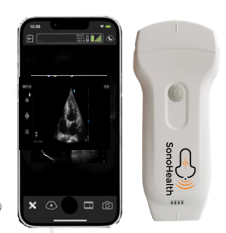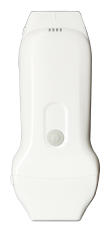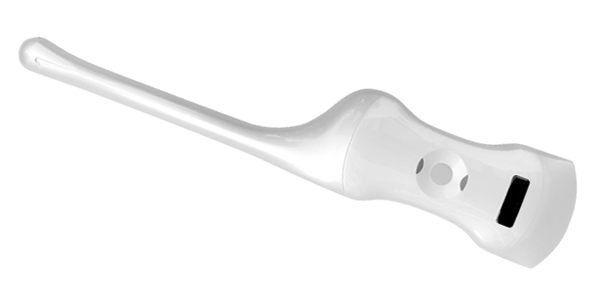Handheld ultrasound device is a portable, compact medical tool that uses ultrasound waves to create images of internal organs and tissues. These devices allow healthcare professionals to perform diagnostic imaging at the bedside, in clinics, or even in remote locations where traditional ultrasound machines might not be available.
Recent technological advancements have made handheld ultrasounds smaller, more affordable, and often connected to smartphones or tablets. They are used in a wide range of medical fields, including emergency medicine, cardiology, obstetrics, and musculoskeletal exams. Key features of handheld ultrasounds include:
10 Impacts of Handheld Ultrasound on Healthcare:
- Increased Access to Diagnostic Imaging: Handheld ultrasound devices provide diagnostic capabilities in rural and remote areas where traditional imaging equipment may be unavailable.
- Faster Diagnosis: Physicians can perform immediate scans at the point of care, reducing the need for referrals and wait times for imaging results.
- Improved Emergency Care: Handheld ultrasounds can quickly assess conditions like internal bleeding, fractures, or organ damage in emergency situations.
- Lower Healthcare Costs: Their affordability compared to traditional ultrasound machines helps reduce overall healthcare costs.
- More Personalized Care: With instant imaging at hand, healthcare professionals can offer more personalized and immediate treatment plans.
- Early Detection of Diseases: Faster and more frequent use of handheld ultrasounds can lead to earlier detection of critical conditions like tumors, heart disease, or ectopic pregnancies.
- Training and Education: Medical professionals and students can use handheld ultrasounds as training tools, improving skills and diagnostic knowledge.
- Global Health Initiatives: They support global health efforts by allowing medical teams to diagnose and treat patients in developing countries and underserved regions.
- Increased Use in Primary Care: Primary care physicians can use handheld ultrasounds to complement physical exams, offering more precise diagnoses in everyday practice.
- Reduced Hospital Readmissions: With better and more timely diagnoses, patients can avoid complications that lead to readmissions.
10 Advantages of Handheld Ultrasound:
- Portability: Lightweight and compact, making them easy to carry anywhere.
- Cost-Effective: More affordable than traditional ultrasound machines, increasing access to advanced imaging.
- Wireless Connectivity: Often connect to smartphones or tablets, allowing for easy image sharing and storage.
- Ease of Use: User-friendly interfaces that require less specialized training than conventional ultrasound machines.
- Rapid Diagnostics: Provide immediate imaging results, accelerating clinical decision-making.
- Durability: Designed for rugged use in different environments, from hospitals to remote field settings.
- Multi-Application Use: Can be used in various medical specialties such as emergency, cardiology, and OB/GYN.
- Remote Consultation: Telemedicine integration allows images to be shared with specialists, enabling remote consultations.
- Improved Patient Comfort: Allows for non-invasive and quick exams without requiring patients to move to specific imaging departments.
- Battery-Operated: Many are battery-powered, making them ideal for use in locations without constant access to electricity.
10 Ways Handheld Ultrasound is Revolutionizing Healthcare:
- Telemedicine Integration: Combining handheld ultrasounds with telemedicine enables remote diagnostics, extending care to underserved populations.
- Bedside Imaging: Physicians can perform point-of-care ultrasounds in real-time, improving diagnostic accuracy during patient consultations.
- Democratizing Medical Imaging: Non-specialists can use handheld ultrasounds for basic imaging, increasing the overall diagnostic capacity of healthcare systems.
- AI-Powered Diagnostics: Some devices incorporate AI, helping users analyze images and identify abnormalities, even with limited training.
- Faster Triage in Emergencies: Paramedics and emergency personnel can quickly assess patients, ensuring faster treatment upon arrival at the hospital.
- Mobile Health Clinics: Handheld devices are easy to carry to mobile clinics, making imaging available in non-traditional healthcare settings.
- Global Health Outreach: Non-profit organizations are using handheld ultrasound devices to bring advanced diagnostics to developing regions, improving global healthcare equity.
- Wearable Connectivity: Future advancements might integrate handheld devices with wearable health monitors, providing continuous imaging data.
- Patient Empowerment: Patients can monitor their conditions more frequently, especially those with chronic illnesses like heart disease or pregnancy complications.
- Reduced Diagnostic Errors: Immediate imaging reduces guesswork in diagnoses, leading to more accurate and timely treatments.
20 Applications of Handheld Ultrasound:
- Emergency Room Diagnostics: Quickly diagnosing trauma cases, such as internal bleeding or fractures.
- OB/GYN: Monitoring fetal development and detecting complications like ectopic pregnancies.
- Cardiology: Assessing heart function, such as ejection fraction and valve conditions.
- Pulmonary Medicine: Detecting pleural effusions or pneumothorax.
- Musculoskeletal Imaging: Evaluating joint dislocations, fractures, and soft tissue injuries.
- Primary Care: Enhancing physical exams with real-time imaging of organs and tissues.
- Vascular Medicine: Assessing blood flow and detecting deep vein thrombosis (DVT).
- Urology: Detecting kidney stones, bladder irregularities, and prostate conditions.
- Surgery: Guiding surgeons during procedures such as biopsies or fluid drainage.
- Anesthesia: Assisting anesthesiologists in placing nerve blocks or catheter insertions.
- Neonatal Care: Monitoring premature infants for brain bleeds or heart issues.
- Pediatric Care: Diagnosing congenital abnormalities in children.
- Oncology: Assisting in tumor detection and monitoring response to treatments.
- Infectious Diseases: Imaging abscesses or infected areas for proper treatment.
- Sports Medicine: Diagnosing tendon, ligament, and muscle injuries.
- Chronic Disease Management: Regular monitoring of organ function in patients with chronic conditions like heart or liver disease.
- Rheumatology: Detecting early signs of arthritis and other autoimmune diseases affecting joints.
- Mobile Clinics: Offering imaging in rural or hard-to-reach areas during medical missions.
- Dermatology: Assisting in diagnosing subdermal tumors or cysts.
- Veterinary Medicine: Used for diagnosing animal conditions in fieldwork or clinics.



